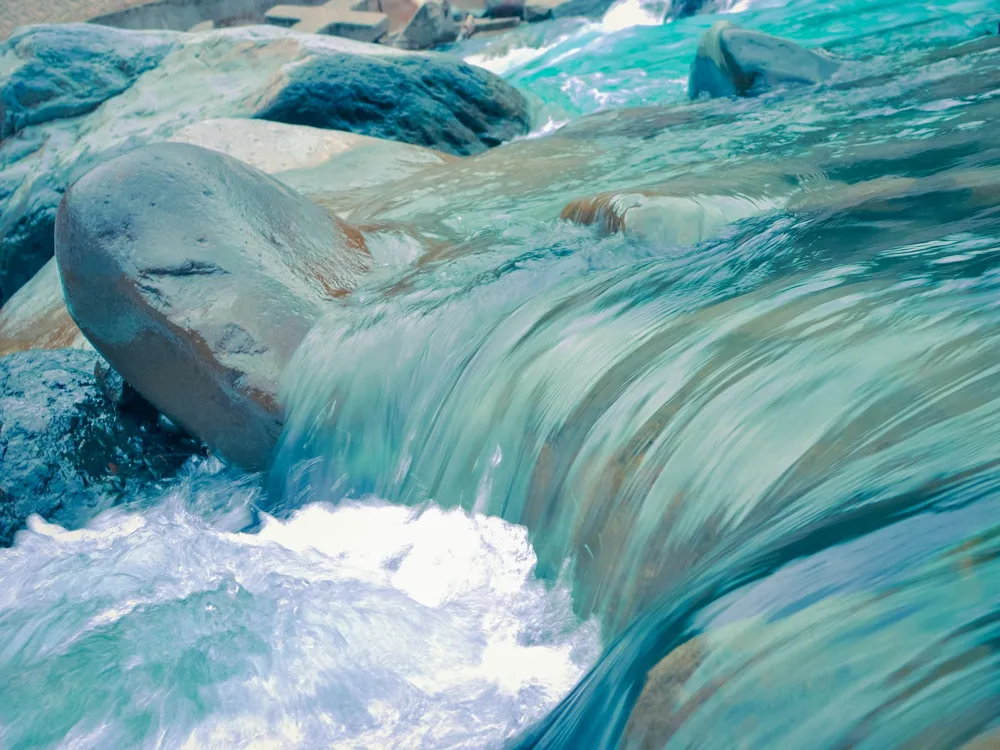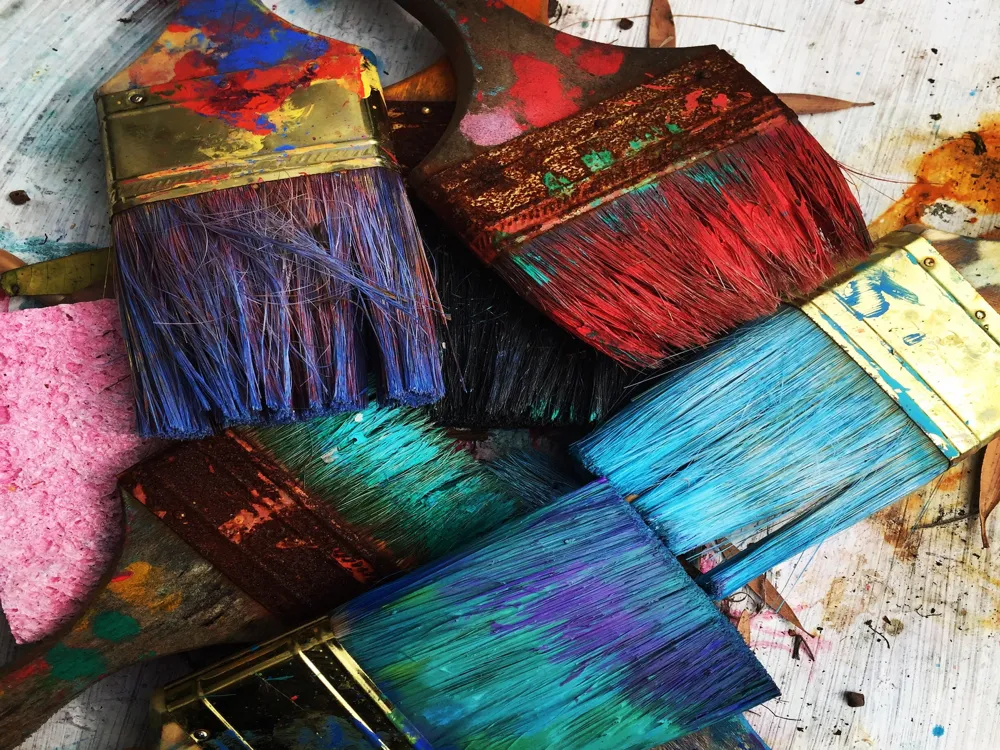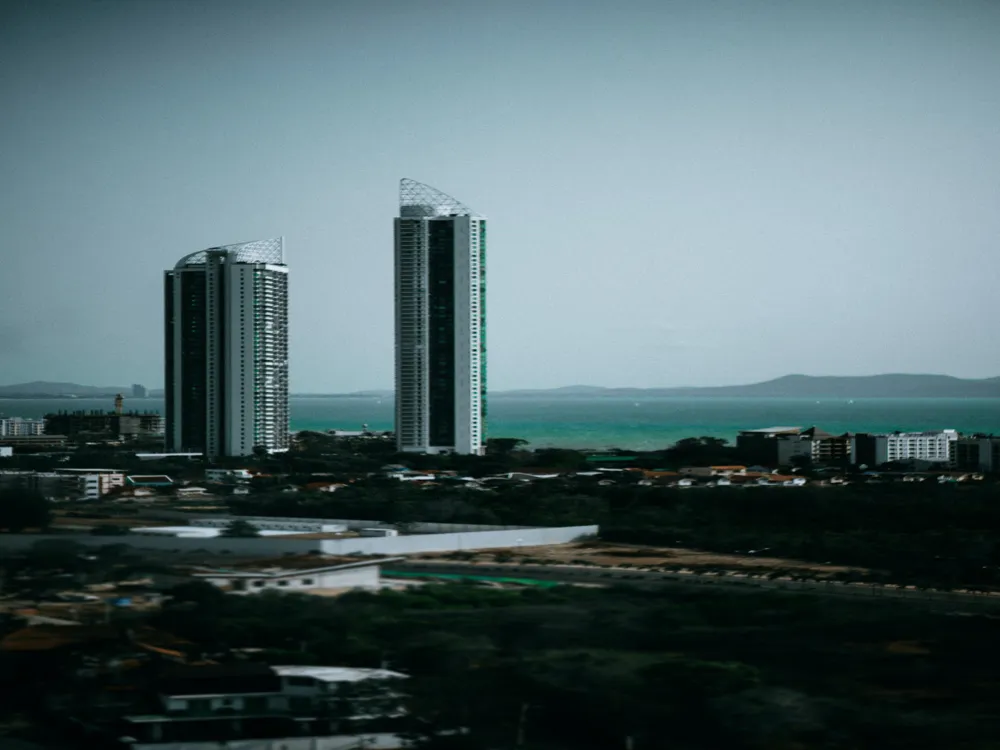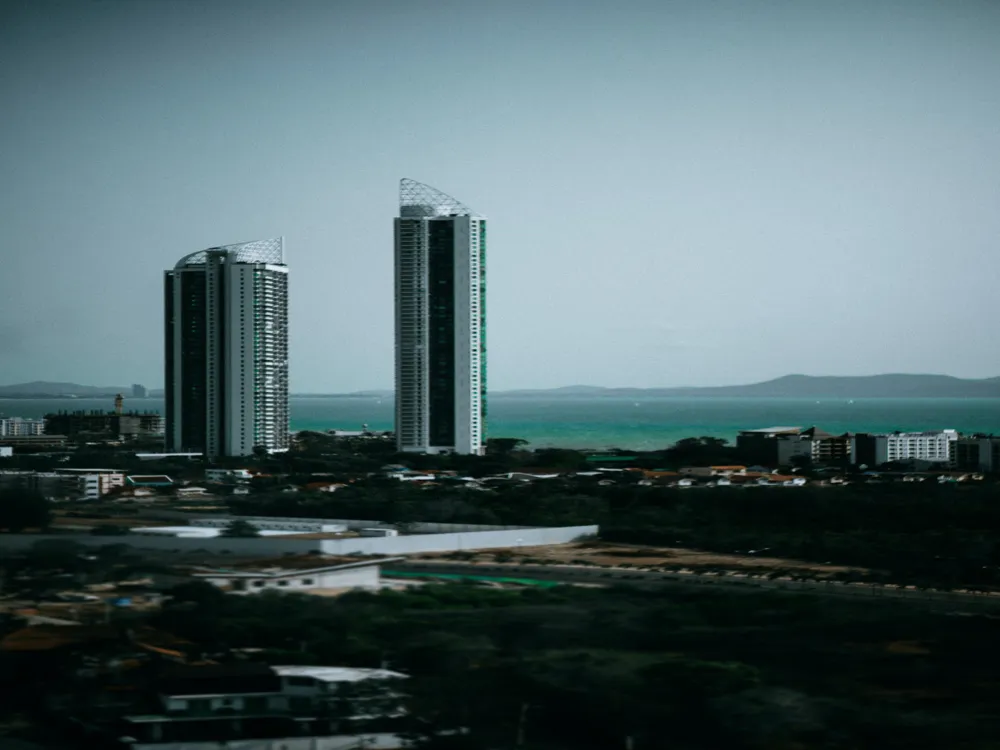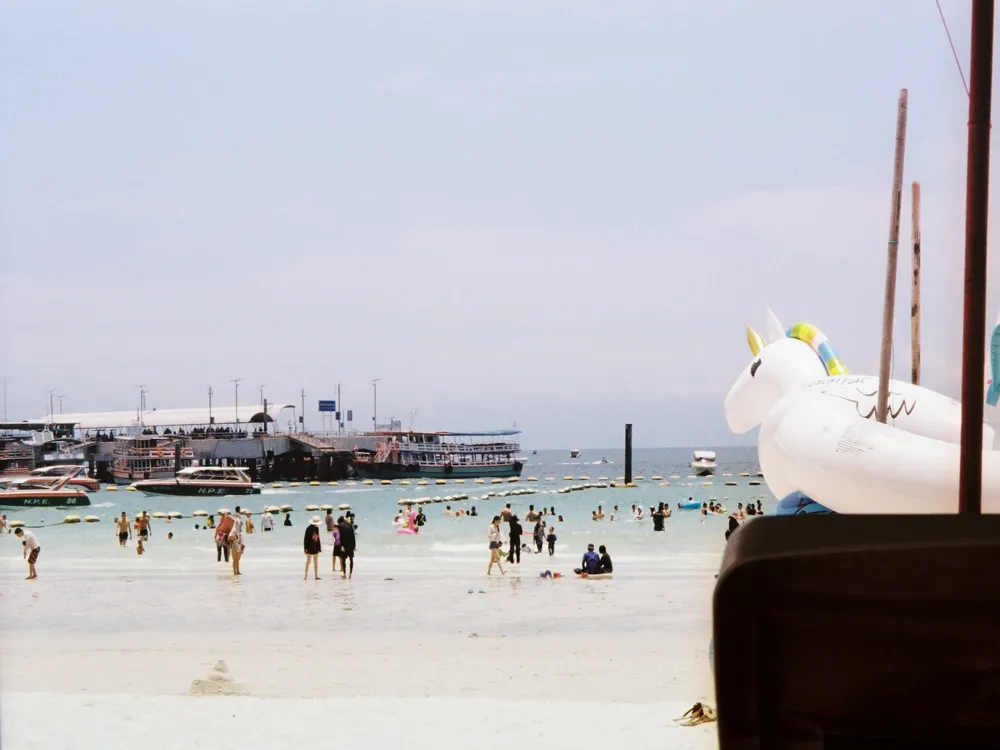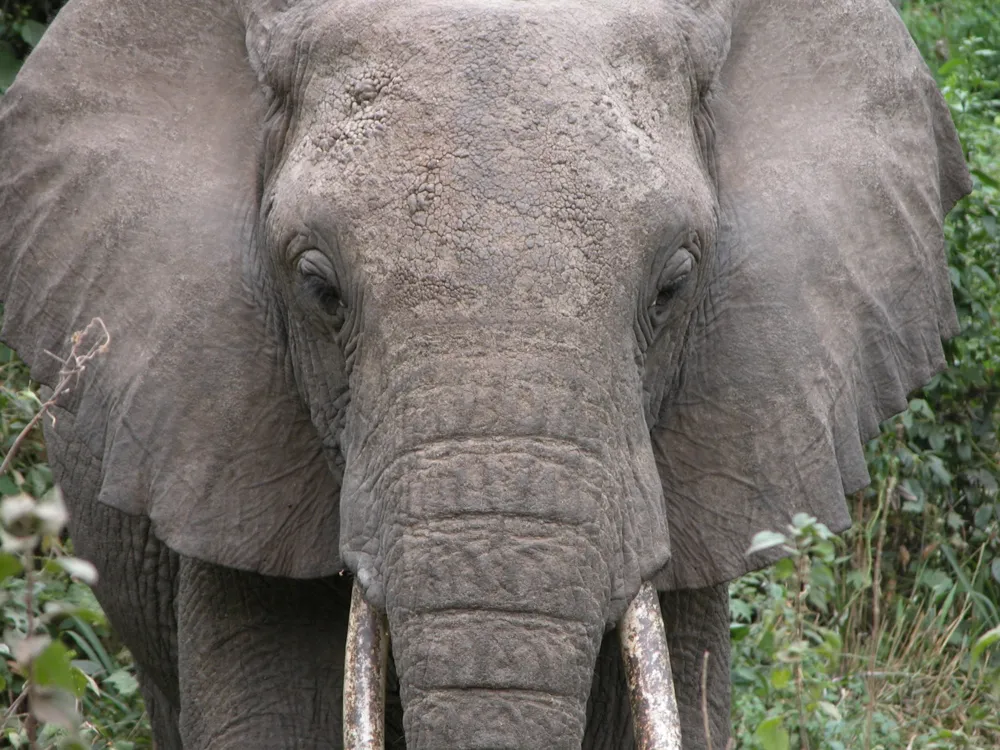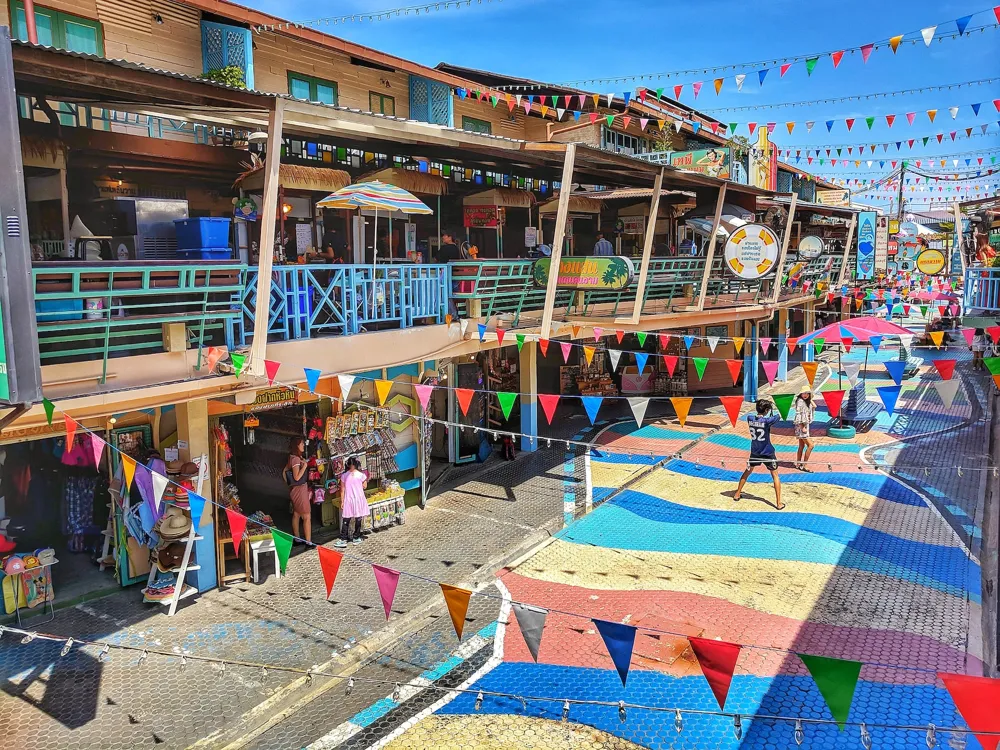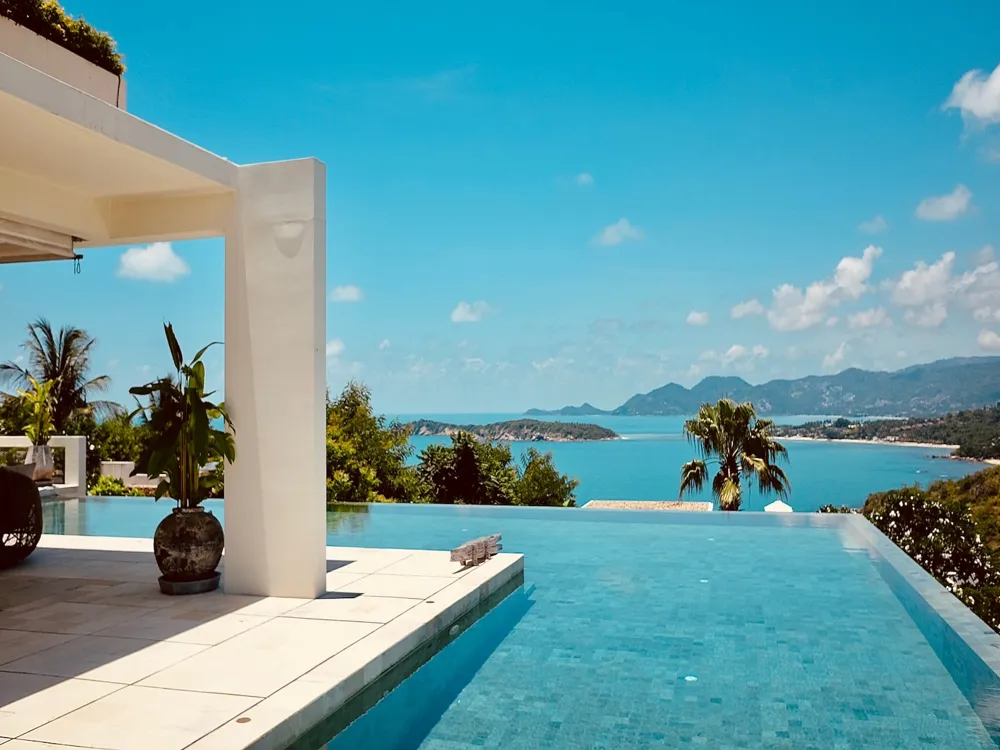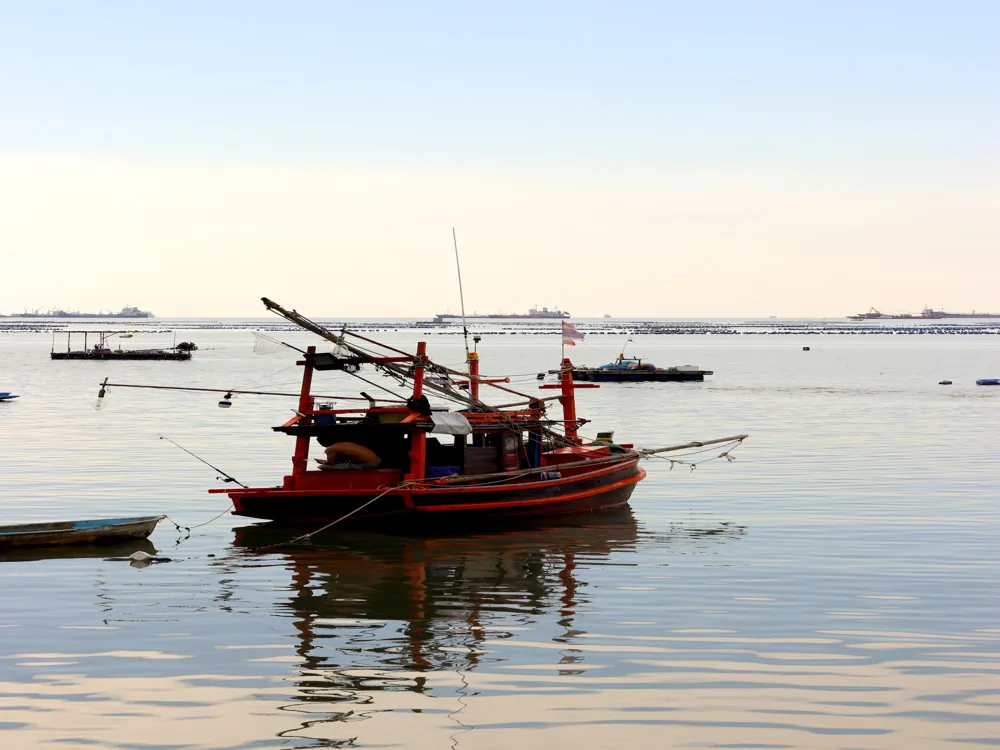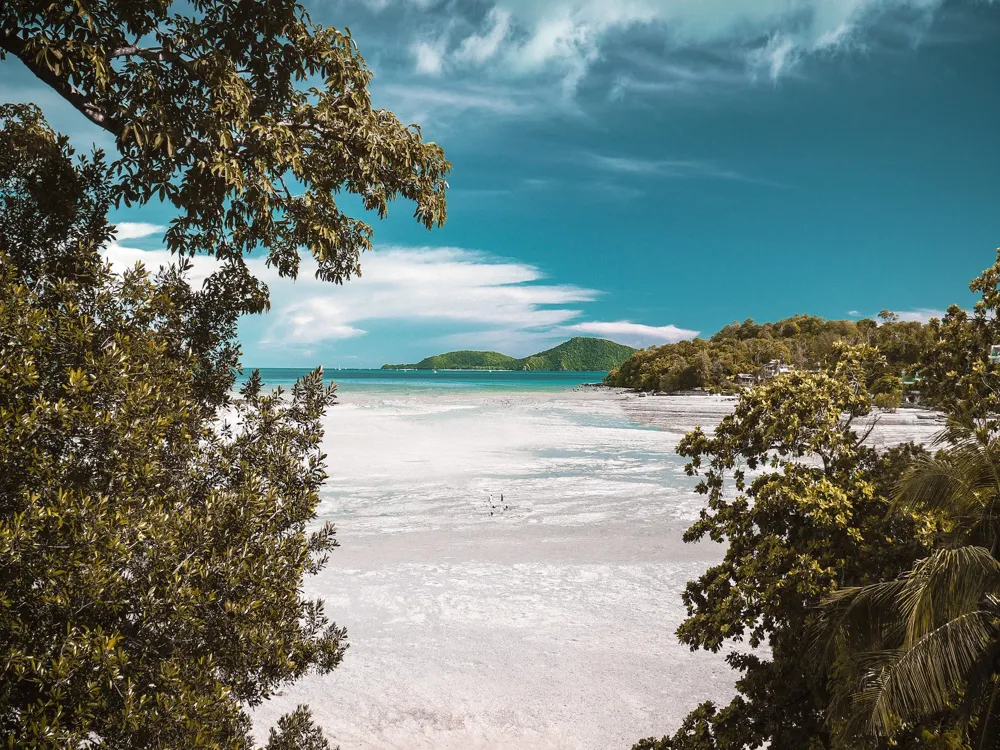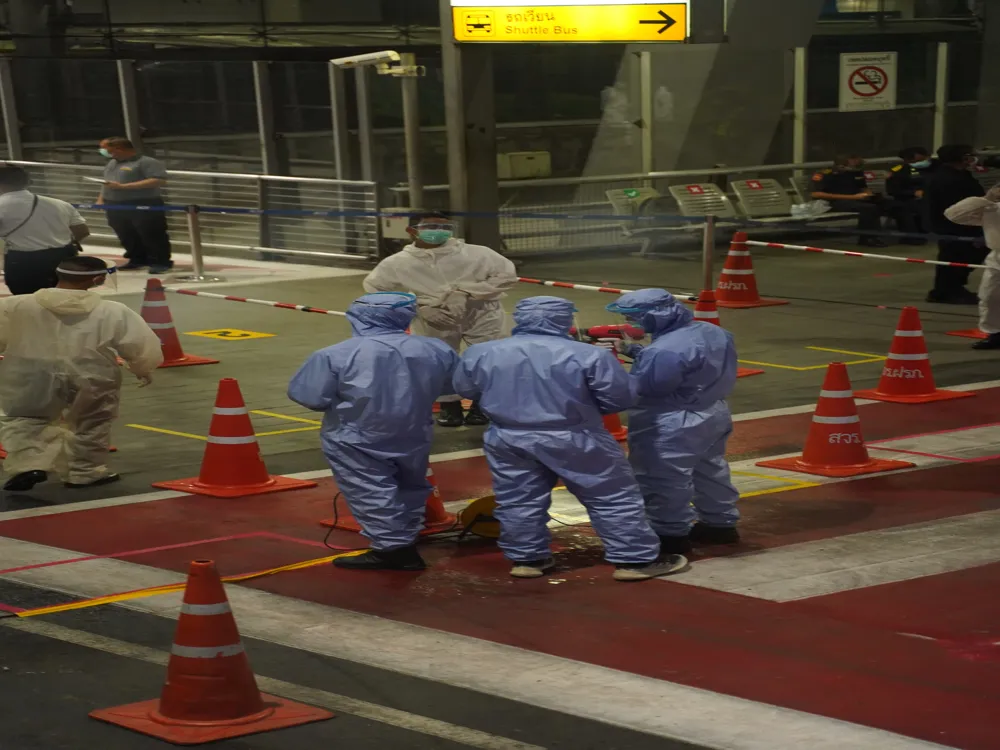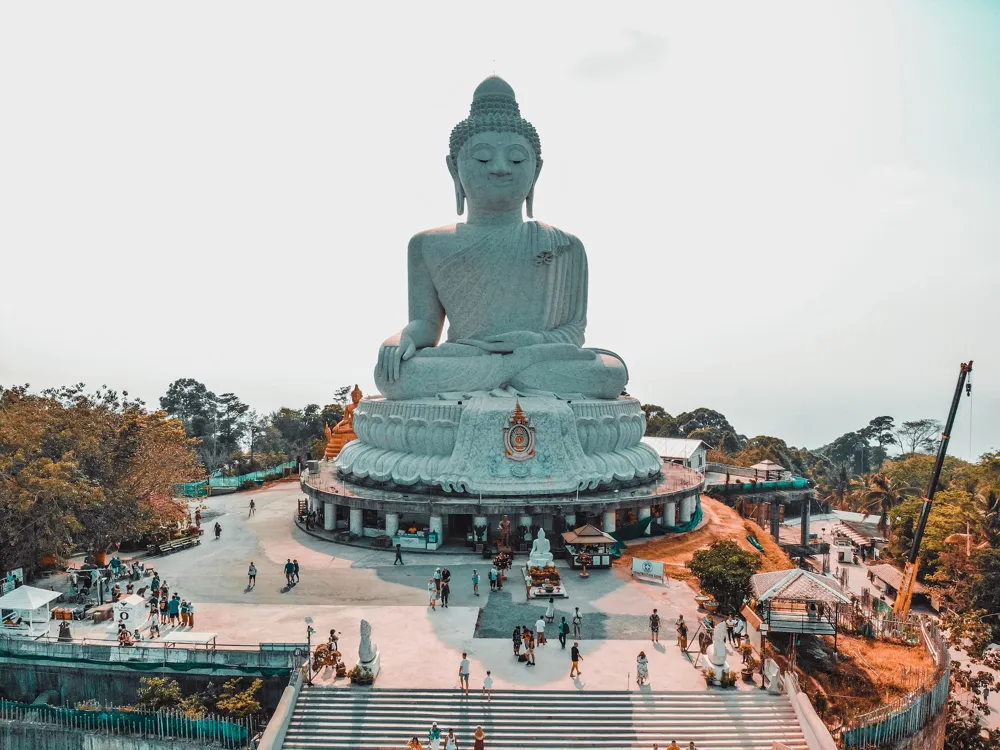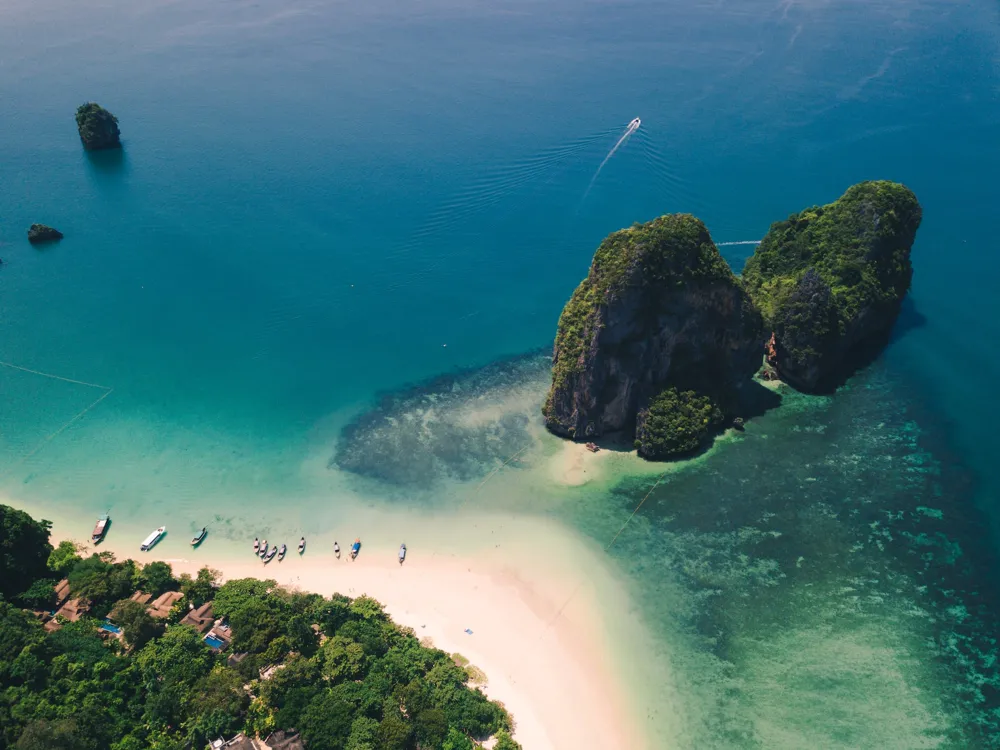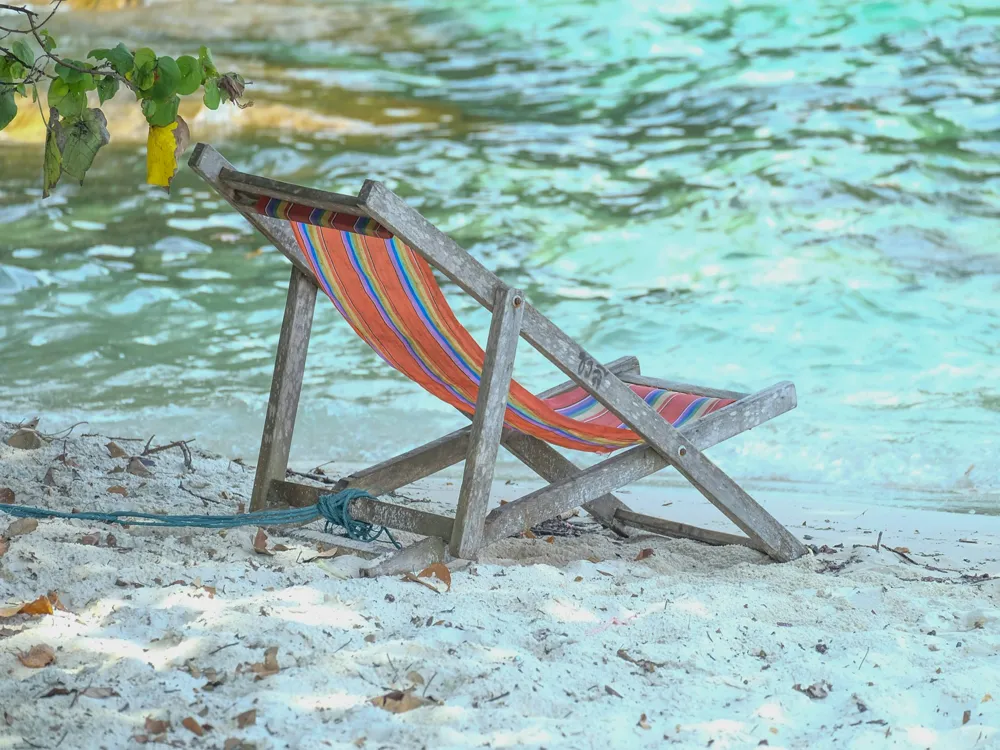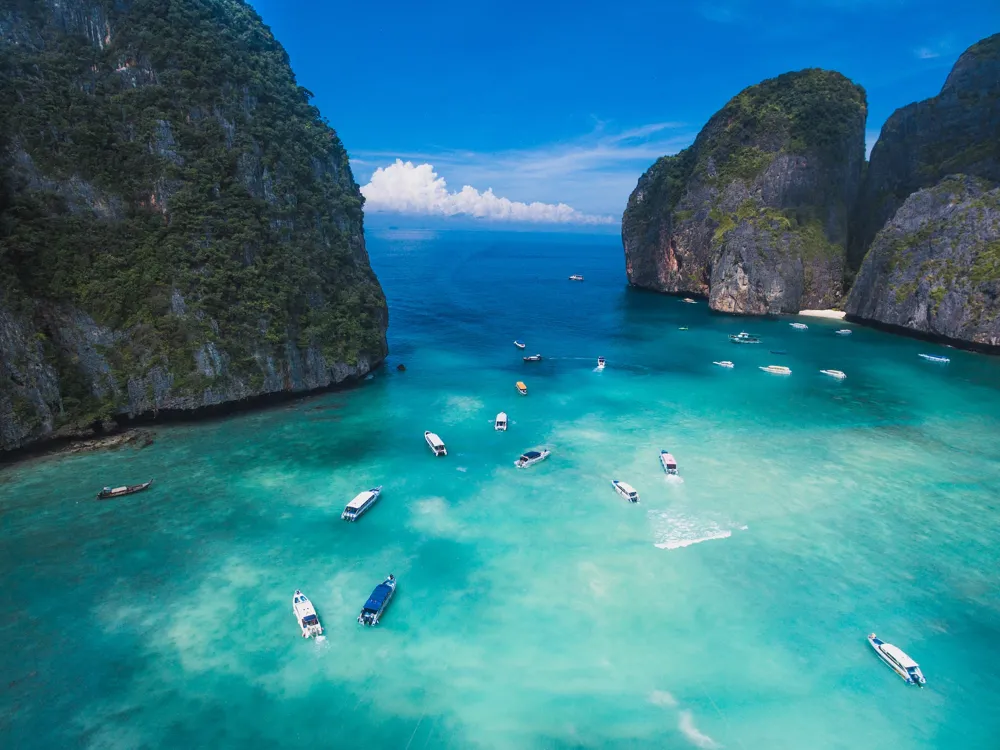Ko Phai, also known as Bamboo Island, is a serene and unspoiled island located near Pattaya, Thailand. This hidden gem, part of the Mu Ko Phai archipelago, is renowned for its natural beauty and tranquil atmosphere. It's a perfect escape from the hustle and bustle of city life. The island offers breathtaking landscapes, crystal-clear waters, and rich marine life, making it a paradise for nature lovers and adventure enthusiasts alike. The island's untouched beauty is its main allure. Ko Phai is largely undeveloped, allowing visitors to experience nature in its most pristine form. The dense tropical forest, home to diverse flora and fauna, covers a significant part of the island, providing a natural habitat for various species of wildlife. The sandy beaches with their powdery white sands are ideal for sunbathing and relaxation. For snorkeling and diving enthusiasts, the surrounding coral reefs teem with an astonishing variety of marine life, offering an unforgettable underwater experience. Visitors to Ko Phai often find themselves captivated by the island's serene atmosphere. The absence of commercial establishments and the low footfall of tourists contribute to its peaceful ambiance. This makes Ko Phai an ideal destination for those seeking solitude and a deep connection with nature. The island's landscape, combined with its rich biodiversity, offers ample opportunities for photography, nature walks, and bird watching. The conservation efforts on Ko Phai have been commendable. The local authorities and environmental groups work tirelessly to preserve the island's natural beauty. These efforts ensure that Ko Phai remains a sustainable and eco-friendly destination, offering an unspoiled paradise for future generations to enjoy. Ko Phai, though primarily known for its natural landscapes, also boasts a unique architectural style that blends seamlessly with its surroundings. The few structures on the island are designed to minimize environmental impact while providing essential facilities to visitors. The architecture of Ko Phai is a testament to sustainable and eco-friendly design principles. The main architectural features on Ko Phai are the traditional Thai huts and bungalows, often used as accommodations for visitors. These structures are built using natural materials like bamboo, wood, and thatch, sourced locally to reduce the carbon footprint. The design of these huts is in harmony with the tropical climate, featuring high ceilings, open spaces, and large windows to ensure natural ventilation and cooling. Another significant architectural aspect of Ko Phai is the use of renewable energy sources. Solar panels are a common sight, providing clean energy to the island's inhabitants and visitors. This not only reduces the reliance on fossil fuels but also maintains the island's tranquility by avoiding the noise and pollution associated with generators. The island's architecture also includes small temples and shrines, reflecting the local culture and spiritual beliefs. These structures, often adorned with intricate carvings and statues, are not only places of worship but also serve as cultural landmarks. They offer a glimpse into the island's history and the religious practices of the local community. Conservation and sustainable design are at the heart of Ko Phai's architectural philosophy. The island's infrastructure is planned and built with a deep respect for the environment. Waste management systems are in place to ensure minimal pollution, and water conservation practices are employed to preserve the island's natural resources. The architectural design on Ko Phai serves as a model for sustainable tourism, showcasing how development and conservation can coexist harmoniously. The architectural designs on Ko Phai are thoughtfully integrated with the natural landscape. Buildings are constructed to blend into the surroundings, often hidden among the trees or nestled along the coastline. This integration ensures that the natural beauty of the island remains the focal point, with the architecture complementing rather than dominating the landscape. Looking to the future, Ko Phai aims to continue its commitment to sustainable architecture and environmental conservation. Plans are in place to further reduce the environmental impact of human activities on the island. These include the introduction of eco-friendly transportation options, the expansion of renewable energy systems, and the implementation of more stringent conservation measures. The goal is to maintain Ko Phai's status as a pristine natural paradise, while accommodating the needs of visitors in an environmentally responsible manner. The ideal time to visit Ko Phai is between November and April when the weather is dry and sunny, making it perfect for outdoor activities. The monsoon season, from May to October, is less ideal due to frequent rains and rough seas. When packing for Ko Phai, include sunscreen, insect repellent, a hat, comfortable walking shoes, and snorkeling gear. Also, bring eco-friendly toiletries and a reusable water bottle to minimize plastic waste. Visitors should respect the local culture and environment. Dress modestly when visiting religious sites, avoid littering, and participate in eco-friendly activities to contribute to the island's conservation efforts. To reach Ko Phai, visitors can take a boat from Bali Hai Pier in Pattaya. The journey usually takes about 2 hours. It's recommended to book a tour or a private boat in advance, especially during the peak tourist season. Some tour operators offer day trips that include snorkeling and island-hopping activities. Read More:Overview of Ko Phai
Architecture of Ko Phai
Conservation and Sustainable Design
Integration with Nature
Future Development Plans
Tips When Visiting Ko Phai
Best Time to Visit
Packing Essentials
Respecting Local Culture and Environment
How To Reach Ko Phai
Ko Phai
Pattaya
₹ 9,500 onwards
View pattaya Packages
Weather :
Tags : Beach
Time Required : 3-4 hours
Planning a Trip? Ask Your Question
Pattaya Travel Packages
View All Packages For Pattaya
Top Hotel Collections for Pattaya

Private Pool

Luxury Hotels

5-Star Hotels

Pet Friendly
Top Hotels Near Pattaya
Other Top Ranking Places In Pattaya
View All Places To Visit In pattaya
View pattaya Packages
Weather :
Tags : Beach
Time Required : 3-4 hours
Planning a Trip? Ask Your Question
Pattaya Travel Packages
View All Packages For Pattaya
Top Hotel Collections for Pattaya

Private Pool

Luxury Hotels

5-Star Hotels

Pet Friendly







